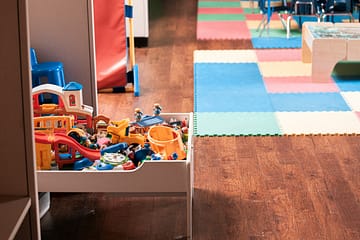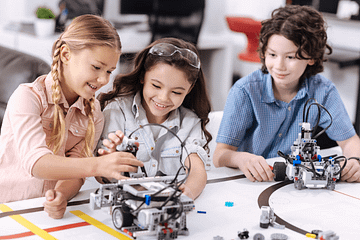As parents, the safety of our children is of utmost importance, and this includes the toys they interact with. Toys play a crucial role in childhood, providing enjoyment, educational opportunities, and fostering growth. However, it’s important to note that not all toys are made with the same level of quality and safety. Some may have toxic materials or unsafe designs that could potentially pose risks. This guide offers a wealth of information on selecting toys that are safe and free from harmful substances, guaranteeing the well-being and joy of your children. Let’s help you choose safe and non-toxic toys for your little ones!
Why Toy Safety Matters
Young children, particularly babies and toddlers, have a natural inclination to discover the world around them by using their senses, sometimes resulting in the habit of putting things in their mouths. These individuals are at a higher risk of experiencing negative consequences due to the presence of harmful substances in certain toys. Maintaining the safety and non-toxicity of toys is crucial in creating a secure play environment, minimising the chances of injuries and exposure to harmful chemicals.
Common Hazardous Materials in Toys
Understanding the common hazardous materials found in some toys is the first step toward making safer choices. Here are some substances to watch out for:
1. Phthalates
Phthalates are chemicals used to make plastics more flexible. They are commonly found in soft vinyl toys, such as teething rings and bath toys. Phthalates have been linked to hormonal disruptions and developmental issues.
2. Lead
Lead is a toxic metal that can cause severe health problems, including brain damage and developmental delays. It is sometimes found in paint and plastic used in toys.
3. Bisphenol A (BPA)
BPA is a chemical used in the production of certain plastics. It is commonly found in baby bottles, sippy cups, and some toys. BPA exposure is associated with various health issues, including hormonal imbalances and behavioral problems.
4. Cadmium
Cadmium is a heavy metal used in some toy coatings and plastics. It is highly toxic and can cause kidney damage and bone loss.
5. Formaldehyde
Formaldehyde is a chemical used in the manufacturing of some toys and textiles. It can cause respiratory problems and skin irritation.
Here are some categories of toys that are generally safe and non-toxic, along with examples and tips for choosing the best options:
1. Wooden Toys
Wooden toys are a great alternative to plastic toys. They are durable, biodegradable, and often made from sustainably sourced wood.
- Blocks and Building Sets: Look for sets that use non-toxic paints and finishes.
- Puzzles and Shape Sorters: Ensure pieces are large enough to avoid choking hazards.
2. Organic Cotton and Fabric Toys
Toys made from organic cotton and other natural fabrics are soft, safe, and free from harmful chemicals.
- Stuffed Animals and Dolls: Choose those made with organic cotton and natural dyes.
- Fabric Books and Play Mats: Ensure they are machine washable and free from small parts.
3. Natural Rubber Toys
Natural rubber is a safe material for teething toys and bath toys.
- Teething Toys: Opt for those labeled as 100% natural rubber.
- Bath Toys: Avoid those with holes that can trap water and promote mold growth.
4. DIY and Handmade Toys
Handmade toys, especially those crafted from natural materials, can be a safe and unique option.
- Hand-Knitted or Crocheted Toys: Ensure they are made with non-toxic, washable yarn.
- Homemade Playdough and Crafts: Use food-safe ingredients and natural dyes.
When choosing toys for your child, it’s important to keep their safety and well-being in mind. Take into account a few important factors.
First, make sure to select toys that are suitable for your child’s age and development to avoid any potential safety risks, such as choking hazards.
Choose toys that are made from safe materials like BPA-free plastics, phthalate-free materials, and lead-free paints. This will help reduce the risk of exposure to harmful substances.
When shopping for toys, it’s important to prioritise safety. Make sure to look for toys that have been certified by trusted organisations like ASTM, CPSC, or EN71.
These certifications indicate that the toys have undergone thorough testing to meet rigorous safety standards. In addition, it’s important to consider toys that are well-made and durable to ensure safety and prevent any potential hazards.
When it comes to toys for younger children, it’s important to avoid those with small parts that can be swallowed or inhaled.
Make sure to keep a close eye on them while they play.
It’s important to stay informed about any potential safety issues by thoroughly reading labels and consulting reviews from other parents. This way, you can educate yourself and make well-informed decisions. By following these guidelines, you can make sure that the toys you select enhance your child’s playtime and prioritise their safety.
Tips for Maintaining Toy Safety
Choosing safe toys is just the first step. Proper maintenance and regular checks are essential to ensure ongoing safety.
1. Regular Toy Safety Inspections
Inspect toys regularly for signs of wear and tear. Remove any broken or damaged toys immediately to prevent injuries.
2. Cleaning and Disinfecting Toys for Children’s Safety
Clean toys frequently, especially those that go in the mouth or are used during bath time. Use mild, non-toxic soap and water, and avoid harsh chemicals.
3. Safe Storage for Toys
Store toys safely to prevent accidents. Keep small toys and parts out of reach of young children. Use storage bins without lids that could trap small fingers.
4. Educate Your Child About Toy Safety
Teach your child about toy safety. Explain why they should not put toys in their mouths and show them how to play with toys appropriately.
Recap on Toy Safety
It is essential to prioritise the health and development of your children by selecting safe and non-toxic toys. Creating a safe and enjoyable play environment for your child involves understanding potential hazards, considering important safety factors, and choosing toys made from natural and non-toxic materials. Keeping up with regular maintenance and staying informed about toy safety measures helps to create a worry-free and enjoyable playtime.
If you enjoyed this guide, be sure to check out our other articles on child safety, toy recommendations, and parenting tips. They’re packed with valuable information to help keep your family informed and safe. Our website is all about helping parents find useful resources and insights to support their children’s well-being. Whether you’re seeking the newest and most exciting toy innovations or seeking practical guidance on child development, we are here to provide unwavering support throughout your parenting journey. Join our vibrant community for exciting content, irresistible offers, and continuous updates to assist you in navigating the fulfilling yet demanding journey of raising thriving, joyful children.


